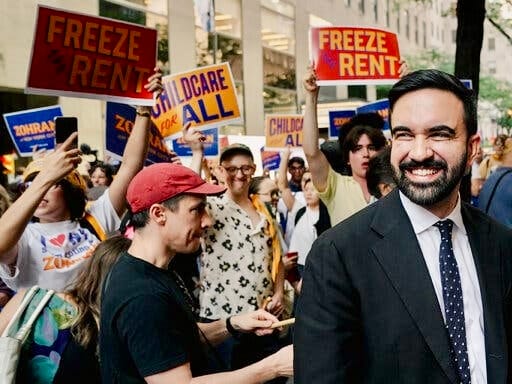The ”how” to free college
It’s hard for ne to think of a government program that raises more ire than President Joe Biden’s brainstorm to give away between $10,000-$50,000 to people who have voluntarily taken on debt, and who are so young to have contributed nothing to society. More on that in a moment.

I refer to college students and Biden’s plan is nothing more than a transparent attempt to buy votes.
Compared to this giveaway, Bernie Sanders' idea to make (at least) community college free is common sensical, because everyone has a shot at the benefits, and is an extension of the current philosophy of free education from kindergarten through high school. That’s been around for more than a century and who could argue that society’s needs have not changed?
The foundational principle of free education is that it’s good for the children, sure, but it is also necessary for a society that needs educated and trained individuals.
Free public education is a win-win situation.
Greasing the palms of college students in debt is more of a they win-you lose proposition.
What’s wrong with it? Let me count the ways:
Elitism. Only about one-third of Americans attend college. So the giveaway benefits the few, and only the few that have not met their obligations. It discriminates against those who have.
Robbing the poor. The “forgiven” debt does not go away. It is paid back primarily by people who did not go to college.
Helping the rich. The average amount of student debt for a person with a bachelor’s degree is $28,950, which is manageable. But it is $66,300 for an MBA, $71,000 for a master’s degree, $145,500 for a law degree and $201,490 for a medical degree. People with advanced degrees are 25% of the loan takers, but half of the money owed, according to Brookings.
It punishes the responsible. The students and parents who scrimped and saved and took out college loans that they paid back are made to look like fools. The giveaway sends the message that being irresponsible is OK if you have a rich Uncle Sam to bail you out.
It encourages bad behavior. If you believe the government will bail you out, that encourages you to take on a larger debt that you can afford. Why not — you are not responsible.
A reward for what? As hinted at above, students have done nothing to improve society or fund the government. They have not started earning, of course. You know who has made things better? The middle class.
Reward the middle class. A 50-year-old probably has been paying taxes for 30 years. How about help with their mortgage? That would improve the economy — something said of reducing college debt — but chances are the 50-year-old will not spend the windfall on drugs and imported bicycles. And — oh — they are far more likely to vote than a 20-year-old.
If the goal is to increase college attendance, and reduce the debt burden, I have a better way.
It starts with an observation that students are asked to pay a lot — the loans — before they have earned anything. That seems silly. Wouldn’t it be better to take on debt when you have money?
My plan starts with a controversial statement: Any student should be able to attend any public college or university for which they qualify — for free.
Who doesn’t like free?
But we know there is no such thing as a free lunch.
So who pays?
The student — but later.
Here’s my plan. Don’t hold me too close to the math. My figures can be adjusted by economists and mathematicians.
You attend, say, Temple, for “free.” Current tuition is $16,970 a year. You owe $67,880 for the four-year ride.
You graduate and you get a job.
You make restitution by paying back 1% of your gross salary for the rest of your life.
Does ”lifetime” sound shocking? It is no different than income tax, or Social Security, something that comes out of every paycheck.
Is 1% too much to ask for a college education? College graduates earn about #1 million more over their lifetime than high school graduates.
If you wind up in a low-paying field, your monthly percentage will be low. You may never pay back the $67,880. If you become a billionaire, you will pay a lot, but you won’t miss it, and your overpayment will help fund the system for future students.
So my plan is free, but not free. It doesn’t reach into taxpayers’ pockets, and it’s open to everyone.
I call it the 1% educational solution.



